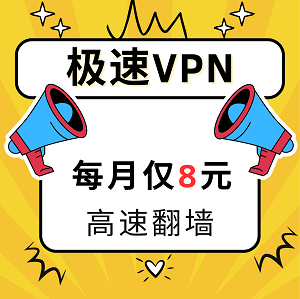目录
- 什么是 v2ray WebSocket + TLS
- 为什么要在 OpenWRT 上配置 v2ray WebSocket + TLS
- 在 OpenWRT 上配置 v2ray WebSocket + TLS 的步骤
- 客户端配置
- FAQ
什么是 v2ray WebSocket + TLS
v2ray 是一个功能强大的代理软件,支持多种协议,其中 WebSocket + TLS 是一种常用的配置方式。在这种配置下,v2ray 会将 HTTP/HTTPS 流量伪装成正常的 WebSocket 流量,并通过 TLS 加密传输,从而绕过一些网络限制和审查。
为什么要在 OpenWRT 上配置 v2ray WebSocket + TLS
OpenWRT 是一个功能强大的开源路由器固件,可以让路由器拥有更多的功能和定制性。在 OpenWRT 上配置 v2ray WebSocket + TLS 可以为整个家庭网络提供科学上网的能力,而且相比在单个设备上配置,路由器级别的代理更加方便和统一。
在 OpenWRT 上配置 v2ray WebSocket + TLS 的步骤
安装 v2ray 和 v2ray-plugin
首先需要在 OpenWRT 上安装 v2ray 和 v2ray-plugin 软件包。可以通过 SSH 或 OpenWRT 的 Web 界面进行安装。
opkg update opkg install v2ray v2ray-plugin
配置 v2ray WebSocket + TLS
接下来需要编辑 v2ray 的配置文件,位于 /etc/v2ray/config.json。
{ “log”: { “loglevel”: “warning” }, “inbounds”: [ { “port”: 10000, “protocol”: “vmess”, “settings”: { “clients”: [ { “id”: “your-uuid”, “alterId”: 64 } ] }, “streamSettings”: { “network”: “ws”, “wsSettings”: { “path”: “/your-path” } } } ], “outbounds”: [ { “protocol”: “freedom”, “settings”: {} } ]}
请将 your-uuid 替换为您的 UUID,/your-path 替换为您希望使用的 WebSocket 路径。
开启 TLS 支持
要开启 TLS 支持,需要在 v2ray 的配置文件中添加以下内容: “streamSettings”: { “network”: “ws”, “security”: “tls”, “tlsSettings”: { “serverName”: “your-domain.com”, “certificates”: [ { “certificateFile”: “/etc/v2ray/cert.crt”, “keyFile”: “/etc/v2ray/private.key” } ] }, “wsSettings”: { “path”: “/your-path” }}
请将 your-domain.com 替换为您的域名,并确保 /etc/v2ray/cert.crt 和 /etc/v2ray/private.key 文件存在且内容正确。
防火墙配置
为了让 v2ray 正常工作,需要在防火墙中开放相应的端口和协议。
uci add firewall rule uci set firewall.@rule[-1].name=’v2ray’ uci set firewall.@rule[-1].src=’*’ uci set firewall.@rule[-1].dest_port=’10000′ uci set firewall.@rule[-1].proto=’tcp’ uci set firewall.@rule[-1].target=’ACCEPT’ uci commit firewall /etc/init.d/firewall restart
启动 v2ray 服务
最后,启动 v2ray 服务:
/etc/init.d/v2ray start /etc/init.d/v2ray enable
客户端配置
在客户端上,需要配置 v2ray 以连接到 OpenWRT 上的服务。以下是一个示例配置:
{ “log”: { “loglevel”: “warning” }, “inbounds”: [ { “port”: 1080, “protocol”: “socks”, “sniffing”: { “enabled”: true, “destOverride”: [“http”, “tls”] } } ], “outbounds”: [ { “protocol”: “vmess”, “settings”: { “vnext”: [ { “address”: “your-domain.com”, “port”: 443, “users”: [ { “id”: “your-uuid”, “alterId”: 64 } ] } ] }, “streamSettings”: { “network”: “ws”, “security”: “tls”, “wsSettings”: { “path”: “/your-path” } } } ]}
请将 your-domain.com 替换为您的域名,your-uuid 替换为您的 UUID,/your-path 替换为您在服务端配置的 WebSocket 路径。
FAQ
为什么要使用 WebSocket + TLS 而不是其他协议?
WebSocket + TLS 相比其他协议有以下优点:
- WebSocket 流量可以伪装成正常的 HTTP/HTTPS 流量,从而绕过一些网络限制和审查。
- TLS 加密可以保护流量的安全性,防止被监听或篡改。
- WebSocket 可以保持长连接,提高连接的稳定性。
如何确保 TLS 证书的安全性?
要确保 TLS 证书的安全性,可以采取以下措施:
- 使用可信的 CA 签发的证书,如 Let’s Encrypt。
- 定期更新证书,避免过期。
- 保护好私钥文件的安全性,不让其泄露。
- 使用强加密算法和密钥长度。
如何排查 v2ray 服务的问题?
如果 v2ray 服务无法正常工作,可以尝试以下排查步骤:
- 检查 v2ray 的日志文件,位于
/var/log/v2ray/access.log和/var/log/v2ray/error.log。 - 检查防火墙规则是否正确配置。
- 检查 TLS 证书是否正确安装和配置。
- 尝试在客户端上直连 v2ray 服务,排除网络问题。
- 对比服务端和客户端的配置文件,确保一致。
如果以上步骤无法解决问题,可以在相关论坛或社区寻求帮助。

